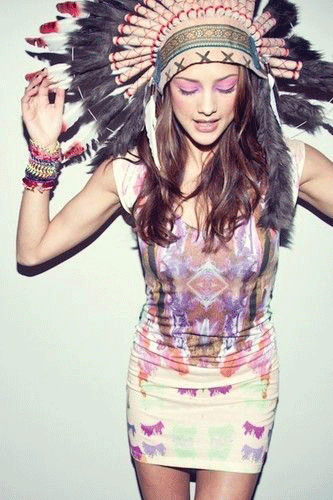Fashion Column: Cultural Appropriation
Cultural appropriation in the fashion industry is nothing new. Brands including Marc Jacobs, Chanel and Victoria’s Secret have all faced backlash for cultural appropriation in recent years. That said, it is celebrities, not the brands themselves, who typically receive most of the criticism. Both the celebrity wearing the offensive piece, and the brand selling it, should be criticized and affected.
In general, the term cultural appropriation is “the act of taking or using things from a culture that is not your own, especially without showing that you understand or respect this culture” (as defined by Cambridge University). Keep in mind that this definition is broad – cultural appropriation is much more complex. Culture represents the history and traditions of a society. When designers and people from other races, particularly the dominant race, “borrow” or use things like dreadlocks, bindis, native headdresses, etc., in their clothing for aesthetic purposes, they make light of and devalue the historical oppression of these styles’ respective ethnic and racial groups.
When Marc Jacobs included dreadlocks in his fashion show, for example, he and his models were commended for using the hairstyle to make a statement. Meanwhile, black women and men don’t receive any such praise. In fact, certain offices and schools today prohibit sporting braids, dreadlocks and afros. At young ages, children of color are taught that, to fit in, they need to straighten their hair and that their natural hair is neither acceptable nor beautiful. So why should the designers and models in these fashion shows get praised for something people of color are denounced for in our modern day society?
Earlier this year, Chanel unveiled a $1,325 boomerang that appropriated Aboriginal culture. This in no way provided any benefits for the indigenous Australians, whose opposing voices were completely ignored as their culture was used to benefit the dominant race through profit. A few other examples of cultural appropriation in fashion are Native American headdresses in the Victoria’s Secret fashion show or the use of feathered headpieces, dashikis and bindis at Coachella. Instances like these demonstrate a lack of respect and awareness towards other cultures, their practices and resistance towards assimilation.
Taking cultural pieces and turning them into Halloween costumes, festival fashion or style pieces diminishes their significance. “Borrowing” from a culture without knowledge of its traditions and oppressive history is appropriation because the races who first held these customs were forced to assimilate and were viewed as backward and uneducated. This perpetuates social and cultural inequality in society. Bottom line: avoid cultural appropriation in your fashion choices. Instead, learn more about different cultures traditions and their significance in a respectful manner.
Contact Angie Diaz at [email protected].







